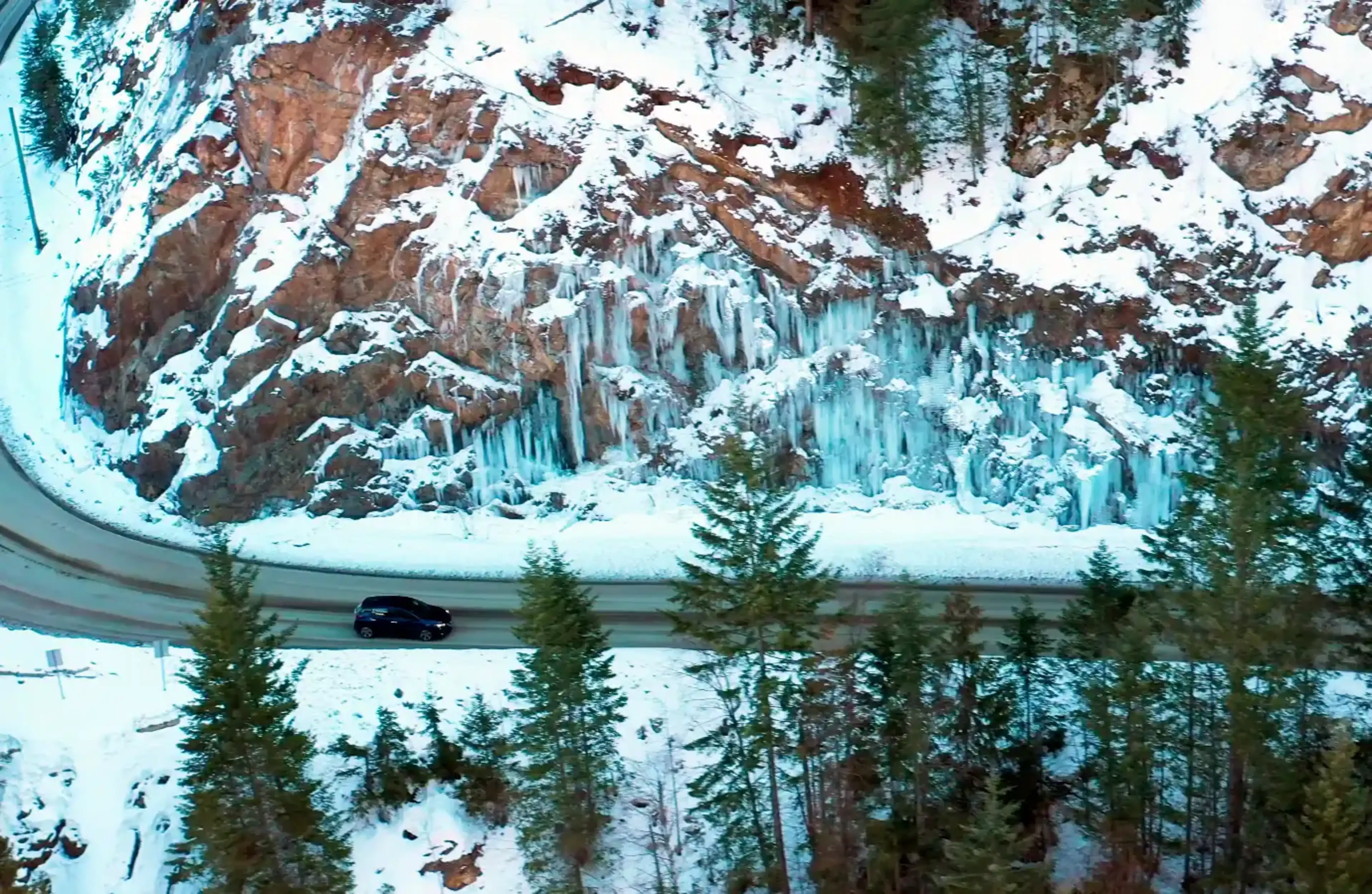Share
Are you going on a holiday trip with your electric car this winter?
Here are the tips that will get you there safely. If you are taking your electric car on a longer trip this winter, it may be a good idea to plan the trip a little in advance. Fortunately, the electric car is excellent for winter driving – provided you take some essential precautions. We have gathered together the best tips for a successful holiday trip in an electric car:
1. Make a plan
According to the Norwegian Automobile Federation (NAF) the electric car has a shorter range in winter, and it may be reduced by anything from 4 to 30 per cent. So it is important to plan where and when to charge the electric car on your trip. The Norwegian Electric Vehicle Association has produced a useful map of all charging stations in Norway, Sweden, Denmark and the rest of Europe.
With the charging app for Fortum Charge & Drive you can quickly find the nearest charging station when you need a top-up, and you have access to the charging networks of both Kople and Recharge in Norway, Sweden and Finland.
If you are taking your car on holiday abroad, it may also be useful to check out Plug surfing, which gives you access to the biggest public charging network in Europe.
2. Check the tyres
Good tyres are important for all cars at any time of year, but for electric cars they have a major bearing on the range. If the tyres are too soft, this can have a big effect on how far you can drive without charging. Soft tyres have more rolling resistance, and simply use more energy, according to the Norwegian Electric Vehicle Association.
Remember too that wheels with a larger circumference and rolling surface will usually result in higher energy consumption. If you are buying new tyres for your car, it is worth keeping this in mind. This also applies to studded tyres, so it is best to drive on studless winter tyres if you can.
3. Pack smart
If you are going to the mountains this winter, you may need to pack some gear with you. Then it might be good to know that a roof box drains the car of electricity – and that is especially true of an electric car. If you choose to travel with a roof box, you should review your charging plan, in case you need more stops than anticipated.
In case you should be unlucky and end up with a flat battery up in the mountains, or on a deserted country road, you should pack both emergency provisions and warm clothes. Silicone spray for the charging port may also come in handy when it’s cold outside.
On longer trips, you should also pack your own charging cable, even if you plan to use a fast charger. Then you can charge on the go, even away from regular charging stations.
4. Save on heat
A warm battery works better than a cold one. Many electric car drivers will notice that charging takes longer in winter. To avoid lengthy and expensive charging, you should charge when the battery is already warm.
It is also a good idea to lower the temperature in the car, so the battery drains more slowly. You can use heated seats and steering wheel to save electricity. The car should be parked inside wherever possible, to prevent it from getting too cold.
5. Easy on the pedal
An electric car is heavier than a fossil fuel-powered car, which makes it great for winter driving. If you drive smoothly and avoid unnecessary acceleration and deceleration, you can save a lot of electricity. You can also use the car’s eco program, which prevents you from going flat out. The temperature in the car will also be automatically adjusted down a few notches.
Regenerative breaking is common in electric cars. This function ensures that the car automatically brakes where it can in order to charge the battery. This is a useful economy function, but it can be problematic on icy roads.
The Norwegian Automobile Federation (NAF) therefore advises electric car drivers to reduce regenerative braking in winter, to prevent accidents. You can easily control the regenerative braking function on the electric car’s dashboard.
Have a good trip and have a great vacation!
About studded tyres Studded tyres can only be used from 1 November onwards, up to the first Sunday after Easter Day. In Nordland, Troms and Finnmark, studded tyres can only be used from 16 October onwards, up to and including 30 April. If the conditions require it, it is permitted to use studded tyres and chains outside these dates. If you use studded tyres, the vehicle must have them on all wheels. You can use studless winter tyres all year round. |
